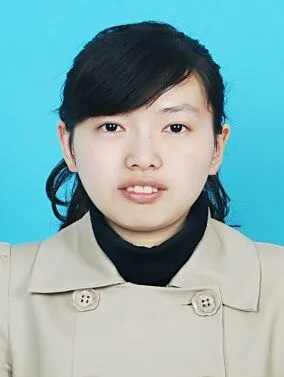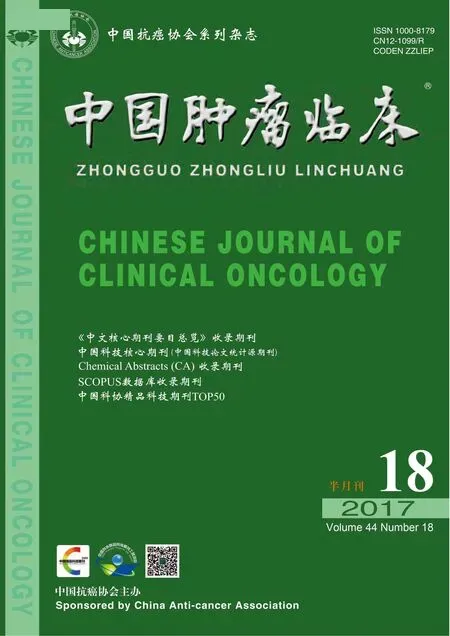进化理论在癌症治疗中的探索
祁清华 综述 周勤 审校
·综 述·
进化理论在癌症治疗中的探索
祁清华 综述 周勤 审校
肿瘤的发生、发展本质上是进化过程发生的疾病,包括肿瘤细胞相互竞争及其对环境的适应。进化理论的探索研究,为肿瘤治疗提供更多新的思路及理论依据。本文从进化要素、生态理念、微环境3个方面分别综述治疗策略、疗效及可能存在的问题,为肿瘤精准治疗提供新视角。
进化 肿瘤 治疗
肿瘤可以被看作是机体某一细胞克隆在进化过程中发生的异常。自1976年Nowell首次提出肿瘤是一个进化的“生物体”以后,学术界开始将肿瘤的发生视为生物进化过程增殖异常[1-2]。2006年Merlo等[3]提出肿瘤是一个独特的“生态系统”,在该系统中,一个物种灭绝的机制主要分为2种:1)物种自身表观遗传改变,无法获得足够的生存空间和资源,或被“猎食者”大量“捕食”;2)环境急剧变化,物种无法适应。随着基因测序技术的不断发展以及临床大数据时代的到来,de Bruin等[4]找到了“进化树”的证据,Gundem等[5]则以前列腺癌为背景揭示肿瘤细胞亚克隆的转移扩散模式,从进化的角度阐述了肿瘤转移的复杂机制。随着基础理论研究的不断深入,学术界逐渐将这些理念用于肿瘤的治疗,以期达到更好的疗效。基于进化的动态理论有学者提出关于靶向药物的两联甚至三联方案的可行性[6-7],也有学者提出靶向药物的更换疗法[8]。Solomon等计划开展一项临床试验,对于T790M突变的肺癌患者首先给予第3代酪氨酸激酶抑制剂(TKI)奥西替尼(ADZ9291)治疗,一旦检测发现突变较前削弱则迅速更换至第1代TKI药物,当突变再次爆发时,则再次予以奥西替尼。本文主要从进化要素、生态理念、微环境3个方面回顾相应的治疗进展,为今后肿瘤治疗研究提供新思路。
1 自适应疗法
1.1 理论基础
肿瘤进化的要素包括3个方面:突变、遗传漂变和选择[9],其在整个肿瘤的发展中也相互联系。突变即DNA序列的改变,而漂变是由小群体引起的基因频率增减甚至消失的现象;选择则是通过对具有不同表型个体进行筛选从而影响基因频率。随着医学检测技术的进步,许多研究人员将重点放在研究肿瘤基因的多样性上,针对癌细胞基因突变的靶向治疗更是当下的热门话题。以非小细胞肺癌(nonsmall cell lung cancer,NSCLC)为例,其靶向药物的发展历经了第1代酪氨酸激酶抑制剂(TKIs)吉非替尼、厄洛替尼,发展至现在第3代奥西替尼和rociletinib(CO-1686)。但是,这种针对基因突变的靶向治疗方案很多最终仍会失败。因为随着治疗时间的推移,耐药性会逐渐显现。rociletinib主要用于EGFR T790M突变产生获得性耐药的患者[10],其缓解率可达59%[11]。然而对rociletinib治疗失败的患者活检发现,6/13耐药性肿瘤细胞会再次变为T790野生型。这也表明基因突变的不稳定性,故不能单纯地寄希望于依靠发现某一种关键基因的突变来达到治愈肿瘤的目的。与基因突变和遗传漂变的随机性相比,选择本质上是有一定方向性的[12-13]。此外,生物体中一些有益的突变虽然免除了遗传漂移潜在的有害影响,但仍然可以被其他竞争性克隆即外界的选择所影响[14]。因此,Gatenby等[15]将研究重点放在选择上面,并且提出了一种自适应疗法。通过调控药物压力,即调整给药剂量和时间,来保持一定数量的药物敏感性细胞,使之对抗耐药细胞,以期达到减缓肿瘤进展的目的[16-17]。
作者单位:芜湖市第二人民医院放疗二科(安徽省芜湖市241000)
1.2 方法与疗效
肿瘤存在基因多样性[18-20]和表观多样性[21]。多个细胞克隆之间存在着相互竞争。简而言之,肿瘤细胞可以分为敏感细胞和耐药细胞,而治疗干预实际上是一种人工选择压力,通过对压力的调控来实现维持耐药细胞和敏感细胞间的平衡,最终抑制肿瘤的生长。Gatenby的研究团队提出了2种自适应疗法:1)给药频率固定,但剂量根据肿瘤大小进行调整;2)药物剂量根据肿瘤生长速率的百分比调整。结果是前者有显著的生存获益,而后者仅能在一定程度上控制肿瘤的生长,最终肿瘤进展。起初,自适应疗法的效果远未达到研究预期。因为此方法中肿瘤细胞的杀灭程度远远低于其他治疗手段。但是随着时间的推移,将敏感细胞株维持在一个合适的生长水平,可以减少耐药株的繁殖,导致肿瘤的缓慢生长,最终延长患者的生存时间[15]。除此之外,研究还表明自适应疗法可以促进肿瘤血管正常化,增加血流量,有助于将药物快速传递至肿瘤病灶中,尽快发挥疗效。需要指出的是,这2种方法都不属于“节拍化疗”,即采用小剂量的化疗药物较频繁地给药[22-23]。因为自适应疗法是应用小剂量药物使得肿瘤细胞数量稳定在某个范围,并非“节拍化疗”期望最大程度上杀灭所有肿瘤细胞。
1.3 不足及缺陷
自适应疗法的核心理论强调在适当的人工选择压力下,保持耐药细胞和敏感细胞的平衡,但是除了选择之外,肿瘤的进展、复发和耐药还与其他的进化因素相关。如关于肠癌患者的循环肿瘤DNA(ctDNA)测定结果显示[24],在抗EGFR治疗之前,有小部分细胞亚克隆出现同源基因的耐药突变,即遗传突变有时会超过选择。除此之外,选择在空间上也受到限制。对许多实体瘤空间分离的亚克隆细胞株的识别中发现细胞株自身的3D结构会阻碍亚克隆之间的相互融合[4,25-28],这也意味着仅相邻细胞株之间才容易形成竞争压力。换言之,肿瘤细胞克隆的不同空间位置给竞争压力设置了障碍,这种结构会削弱选择的效果而增加基因突变的作用[14]。因此,在肿瘤治疗途径的选择上应秉持多管齐下,相互协作的原则。
2 ersatzdroges的应用
2.1 理论基础
生态系统是由环境中各种生物体和非生物体相互作用、相互影响、互利共生构成的一个动态开放、不断演进的适应性、平衡系统。从生态特点上,肿瘤细胞可以看作在代谢和生长上不同于正常宿主细胞的新物种。在合适的时间、空间和环境条件下成功“入侵”生态位后形成原发性肿瘤[29-31]。而一个新物种的入侵,必将与原物种在空间和资源上进行争夺。众所周知,细胞的增殖、侵袭和转移需要消耗能量。在有限的资源环境中,蛋白的表达和应用势必会夺取细胞生长和侵袭所需的能量。Kam等[32]研究通过增加细胞其他方面的能量消耗,来减少耐药细胞生长所需能量,最终达到杀灭的目的。
2.2 方法与疗效
ABC蛋白(即ATP结合转运蛋白)通过消耗ATP,可以将多种化学物质和药物泵出细胞外。ersatzdroges是一种ABC蛋白的底物并且促使多药耐药细胞(MDR)激活细胞膜上的转运体。Kam等[32]研究发现ersatzdroges的应用可以显著降低阿霉素耐药株(MCF-7/DOX)的增殖水平,尤其是在资源有限的情况下。与常规培养基(含2g/L葡萄糖)相比,在含0.5g/L葡萄糖培养基中MCF-7/DOX细胞存活率降低至84.0%±7.6%(P<0.05)。即通过增加维持细胞耐药性的代谢成本从而延缓细胞的增殖。这种疗法对于低表达ABC转运体的细胞株没有显著效果。而大多数耐药细胞株高表达ABC蛋白,因为它们通过消耗ATP可以将多种化学物质和药物泵出细胞外,进而产生耐药。因此,ersatzdroges可以增大低表达ABC蛋白的敏感细胞株和过表达ABC蛋白的耐药株之间的增殖差距,通过增加代谢成本来杀灭耐药细胞株。
2.3 不足与缺陷
目前,这种方法仍处于细胞学实验阶段,且ersatzdroges是否会影响细胞膜上其他的泵尚不明确,距离应用于临床实践将会是一个漫长的过程。
3 buffer therapy缓冲微环境疗法
3.1 理论基础
微环境是由多种细胞及它们的表达产物、代谢物质等成分构成,而肿瘤细胞赖以生存的低氧、酸性、耐药和免疫逃逸“居住”微环境,更是为其生存、发展、侵袭和转移提供了庇护所。有研究表明[33-35]恶性肿瘤组织和正常组织的细胞外pH值(pHe)有显著性差异,分别是pHe=6.5~6.9和pHe=7.2~7.4。肿瘤细胞周围的酸性环境,尤其是细胞外酸性pH(Phe)是肿瘤患者无转移生存率的重要负向预测指标[36]。
3.2 方法与疗效
有研究提出缓冲微环境疗法,通过中和肿瘤细胞周围的酸性成分,来削弱它的生长和侵袭能力。已有研究发现[37]赖氨酸游离基团(pH=10.6)可以抑制前列腺癌细胞的转移形成。给药时间的不同,其疗效也不尽相同。早期给药主要是针对原发灶的形成,而晚期给药与对照组相比则无明显疗效。因此,早期予以局部pH值的干预可能有助于肿瘤的预防[38]。除此之外,这种缓冲治疗也可以提高常规化疗的疗效[39-40]。
3.3 不足与缺陷
缓冲疗法的方式可以多种多样,包括质子泵药物、非挥发的口服缓冲液等。但是药物剂量的选择仍是未知。目前,虽然有部分学者[41-43]研究口服缓冲液,并发现它们确实可以中和肿瘤的酸性,但是对于长期服用缓冲液的不良作用仍不明确。
4 展望
众所周知,肿瘤耐药是化疗失败的主要原因之一。目前,已有学者从耐药相关基因及蛋白[44]、细胞凋亡[45]、细胞信号转导通路[46]等角度阐释了耐药机制的发生。近年来随着二代测序技术及DNA嵌合芯片技术的发展,长链非编码RNA(lncRNA)[47]和小分子RNA(microRNA)[48]成为研究的热点,2种RNA从转录及转录后水平调控了多种基因及蛋白的表达进而参与肿瘤耐药的形成。基于进化理论来研究耐药和相应的治疗手段仍被忽略[49]。肿瘤的进化和生态学实际上为肿瘤的研究及治疗提供了新的机遇。肿瘤细胞像自然界中的生物个体一样,接受外界的选择,并相互竞争生存空间和资源,逃避免疫系统的捕杀,甚至能相互“协作”从而成功发生播散和转移。针对其中各个环节的研究和靶向治疗,可能会产生更多应对的新方法。
[1]Gerlinger M,Swanton C.How darwinian models inform therapeutic failure initiated by clonal heterogeneity in cancer medicine[J].Br J Cancer,2010,103(8):1139-1143.
[2]Nowell PC.The clonal evolution of tumor cell populations[J].Science,1976,194(4260):23-28.
[3]Merlo LM,Pepper JW,Reid BJ,et al.Cancer as an evolutionary and ecological process[J].Nat Rev Cancer,2006,(6):924-935.
[4]de Bruin EC,McGranahan N,Mitter R,et al.Spatial and temporal diversity in genomic instability processes defines lung cancer evolution[J].Science,2014,346(6206):251-256.
[5]Gundem G,Van Loo P,Kremeyer B,et al.The evolutionary history of lethal metastatic prostate cancer[J].Nature,2015,520(7547):353-357.
[6]MisaleS,Bozic I,TongJ,et al.Vertical suppression of the EGFR path way prevents onset of resistance in colorectal cancers[J].Nat Commun,2015,6(5):8305.
[7]Bozic I,Reiter JG,Allen B,et al.Evolutionary dynamics of cancer in response to targeted combination therapy[J].Elife,2013,(2):e00747.
[8]Willyard C.Cancer therapy:an evolved approach[J].Nature,2016,532(7598):166-168.
[9]Lipinski KA,Barber LJ,Davies MN,et al.Cancer Evolution and the Limits of Predictability in Precision Cancer Medicine[J].Trends Cancer,2016,2(1):49-63.
[10]Cortot AB,Janne PA.Molecular mechanisms of resistance in epidermal growth factor receptor-mutant lung adenocarcinomas[J].Eur Respir Rev,2014,23(133):356-366.
[11]Sequist LV,Rolfe L,Allen AR.Rociletinib in EGFR-mutated non-smallcell lung cance[J].N Engl J Med,2015,373(6):578-579.
[12]Szendro IG,Franke J,de Visser JA,et al.Predictability of evolution depends nonmonotonically on population size[J].Proc Natl Acad Sci U S A,2013,110(2):571-576.
[13] Blount ZD, Borland CZ, Lenski RE. Historical contingency and theevolution of a key innovation in an experimental population ofEscherichia coli[J]. Proc Natl Acad Sci U S A, 2008, 105(23):7899-906.
[14]Lynch M.The frailty of adaptive hypotheses for the origins of organismal complexity[J].Proc Natl Acad Sci U S A,2007,104(Suppl 1):8597-8604.
[15]Gatenby RA,Silva AS,Gillies RJ,et al.Adaptive therapy[J].Cancer Res,2009,69(11):4894-4903.
[16]Silva AS,Kam Y,Khin ZP,et al.Evolutionary approaches to prolong progression-free survival in breast cancer[J].Cancer Res,2012,72(24):6362-6370.
[17]Enriquez-Navas PM,Kam Y,Das T,et al.Exploiting evolutionary principles to prolong tumor control in preclinical models of breast cancer[J].Sci Transl Med,2016,8(327):327ra24.
[18]Yachida S,Jones S,Bozic I,et al.Distant metastasis occurs late during the genetic evolution of pancreatic cancer[J].Nature,2010,467(7319):1114-1117.
[19]Merlo LM,Shah NA,Li X,et al.A comprehensive survey of clonal diversity measures in Barrett's esophagus as biomarkers of progression to esophageal adenocarcinoma[J].Cancer Prev Res(Phila),2010,3(11):1388-1397.
[20]Park SY,Gonen M,Kim HJ,et al.Cellular and genetic diversity in the progression of in situ human breast carcinomas to an invasive phenotype[J].J Clin Invest,2010,120(2):636-644.
[21]Varley KE,Mutch DG,Edmonston TB,et al.Intra-tumor heterogeneity ofmLH1 promoter methylation revealed by deep single molecule bisulfite sequencing[J].Nucleic Acids Res,2009,37(14):4603-4612.
[22]Mehta RS,Jackson D,Schubbert T.Metronomic schedule of paclitaxel is effective in hormone receptor-positive and hormone receptornegative breast cancer[J].J Clin Oncol,2009,27(18):3067-3068.
[23]Montagna E,Cancello G,Dellapasqua S,et al.Metronomic therapy and breast cancer:a systematic review[J].Cancer Treat Rev,2014,40(8):942-950.
[24]Diaz LA Jr,Williams RT,Wu J,et al.The molecular evolution of acquired resistance to targeted EGFR blockade in colorectal cancers[J].Nature,2012,486(7404):537-540.
[25]Gerlinger M,Rowan AJ,Horswell S,et al.Intratumor heterogeneity and branched evolution revealed by multiregion sequencing[J].N Engl J Med,2012,366(10):883-892.
[26]Gerlinger M,Horswell S,Larkin J,et al.Genomic architecture and evolution of clear cell renal cell carcinomas defined by multiregion sequencing[J].Nat Genet,2014,46(3):225-233.
[27]Sottoriva A,Spiteri I,Piccirillo SG,et al.Intratumor heterogeneity in human glioblastoma reflects cancer evolutionary dynamics[J].Proc Natl Acad Sci U S A,2013,110(10):4009-4014.
[28]Zhang J,Fujimoto J,Zhang J,et al.Intratumor heterogeneity in localized lung adenocarcinomas delineated by multiregion sequencing[J].Science,2014,346(6206):256-259.
[29]Whiteside TL.The tumor microenvironment and its role in promoting tumor growth[J].Oncogene,2008,27(45):5904-5912.
[30]Didham RK,Tylianakis JM,Gemmell NJ,et al.Interactive effects of habitat modification and species invasion on native species decline[J].Trends Ecol Evol,2007,22(9):489-496.
[31]Kareva I.What can ecology teach us about cancer[J].Transl Oncol,2011,4(5):266-270.
[32]Kam Y,Das T,Tian H,et al.Sweat but no gain:inhibiting proliferation of multidrug resistant cancer cells with"ersatzdroges"[J].Int J Cancer,2015,136(4):E188-196.
[33]Stubbs M,McSheehy PM,Griffiths JR,et al.Causes and consequences of tumour acidity and implications for treatment[J].Mol Med Today,2000,6(1):15-19.
[34]Gillies R J,Liu Z,Bhujwalla Z.31P-MRS measurements of extracellular pH of tumors using 3-aminopropylphosphonate[J].Am J Physiol,1994,267(1 Pt 1):C195-203.
[35]van Sluis R,Bhujwalla ZM,Raghunand N,et al.In vivo imaging of extracellular pH using 1H MRSI[J].Magn Reson Med,1999,41(4):743-750.
[36]Lora-Michiels M,Yu D,Sanders L,et al.Extracellular pH and P-31 magnetic resonance spectroscopic variables are related to outcome in canine soft tissue sarcomas treated with thermoradiotherapy[J].Clin Cancer Res,2006,12(19):5733-5740.
[37]Ribeiro MD,Silva AS,Bailey KM,et al.Buffer Therapy for Cancer[J].J Nutr Food Sci,2012,2(2):6-22.
[38]Ibrahim-Hashim A,Cornnell HH,Abrahams D,et al.Systemic buffers inhibit carcinogenesis in TRAMP mice[J].J Urol,2012,188(2):624-631.
[39]Mahoney BP,Raghunand N,Baggett B,et al.Tumor acidity,ion trapping and chemotherapeutics.I.Acid pH affects the distribution of chemotherapeutic agents in vitro[J].Biochem Pharmacol,2003,66(7):1207-1218.
[40]Raghunand N,Mahoney BP,Gillies RJ.Tumor acidity,ion trapping and chemotherapeuticsⅡ.pH-dependent partition coefficients predict importance of ion trapping on pharmacokinetics of weakly basic chemotherapeutic agents[J].Biochem Pharmacol,2003,66(7):1219-1229.
[41]Raghunand N,He X,van Sluis R,et al.Enhancement of chemotherapy by manipulation of tumour pH[J].Br J Cancer,1999,80(7):1005-1011.
[42]Chen LQ,Randtke EA,Jones KM,et al.Evaluations of Tumor Acidosis Within In Vivo Tumor Models Using Parametric Maps Generated with Acido CEST MRI[J].Mol Imaging Biol,2015,17(4):488-496.
[43]Andreev OA,Dupuy AD,Segala M,et al.Mechanism and uses of a membrane peptide that targets tumors and other acidic tissues in vivo[J].Proc Natl Acad Sci U S A,2007,104(19):7893-7898.
[44]Sui H,Fan ZZ,Li Q.Signal transduction pathways and transcriptional mechanisms of ABCB1/Pgp-mediated multiple drug resistance in human cancer cells[J].J Int Med Res,2012,40(2):426-435.
[45]Mor G,Montagna MK,Alvero AB.Modulation of apoptosis to reverse chemoresistance J].Methods Mol Biol,2008,414(414):1-12.
[46]Chitnismm,Yuen JS,Protheroe AS,et al.The type1 insulin-like growth factor receptor pathway[J].Clin Cancer Res,2008,14(20):6364-6370.
[47]Pan JJ,Xie XJ,Li X,et al.Long non-coding RNAs and drug resistance[J].Asian Pac J Cancer Prev,2015,16(18):8067-8073.
[48]Dehghanzadeh R,Jadidi-Niaragh F,Gharibi T,et al.MicroRNA-induced drug resistance in gastric cancer[J].Biomed Pharmacother,2015,74(1):191-199.
[49]Aktipis CA,Kwan VS,Johnson KA,et al.Overlooking evolution:a systematic analysis of cancer relapse and therapeutic resistance research[J].PLoS One,2011,6(11):e26100.
Evolution theory in cancer treatment
Qinghua QI,Qin ZHOU
Department of Radiotherapy,the Second People's Hospital of Wuhu,Wuhu 241000,China
Tumorigenesis and development are essential evolutionary processes that include tumor cell selection,mutual competition,and environmental adaptation.The exploration of evolution theory provides newer ideas and theoretical basis for cancer treatment.This paper reviews the methods,curative effect,and possible problems of three treatment strategies based on evolutionary factors,ecological concepts,and microenvironment,shedding new light on precision tumor treatment.
evolution,cancer,treatment
Qin ZHOU;E-mail:632556250@qq.com

10.3969/j.issn.1000-8179.2017.18.383
周勤 632556250@qq.com
(2017-03-30收稿)
(2017-07-10修回)
(编辑:郑莉 校对:孙喜佳)
祁清华 专业方向为消化道肿瘤的治疗。
E-mail:823141695@qq.com

